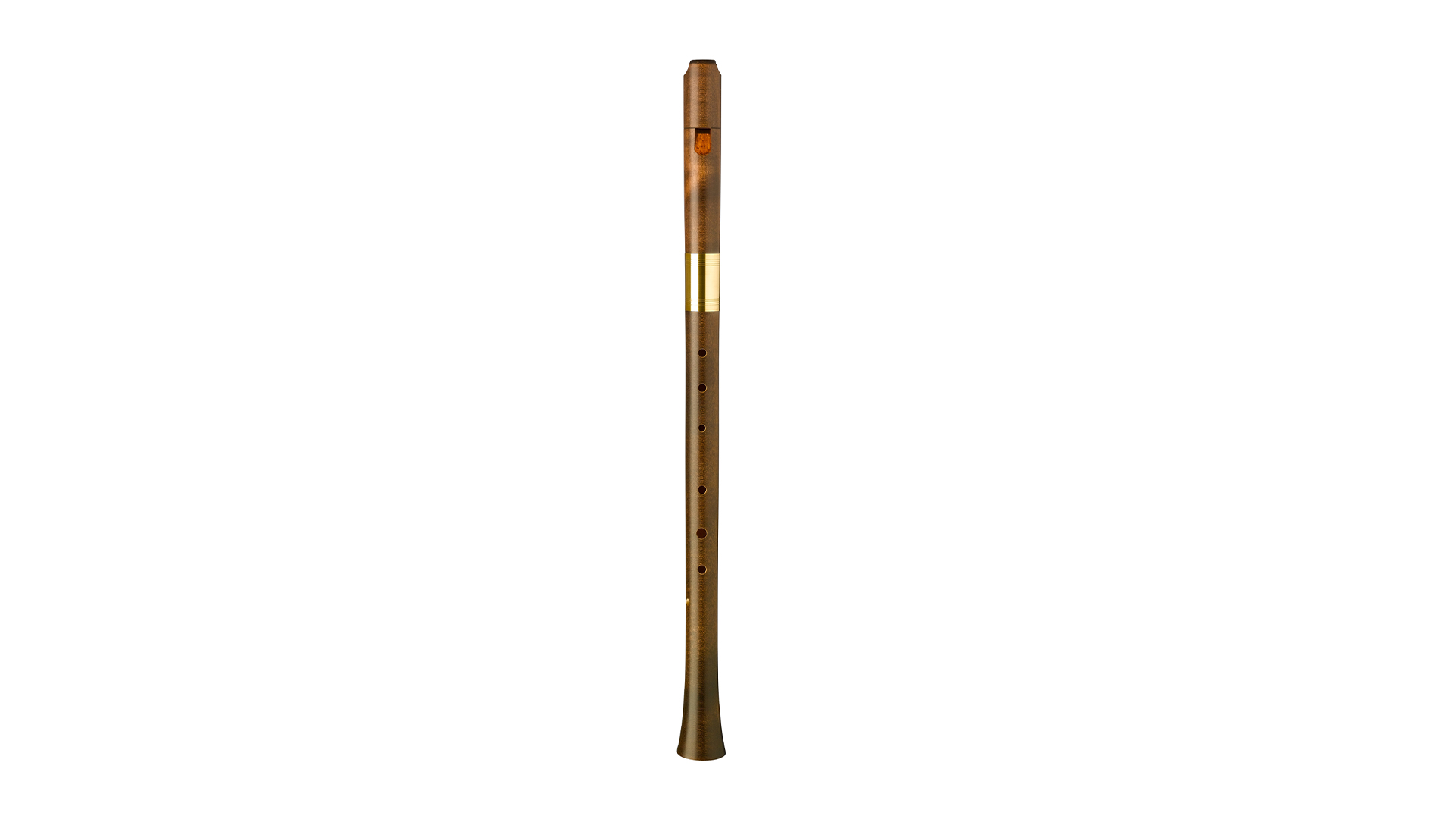Moeck, "Renaissance Consort", tenor in c', baroque single hole 442 Hz, 1,5 oct. range, maple stained
Baroque Singlehole, Item: 8420-MOE Stained, 442 Hz
This Tenor instrument with the article number: 8420-MOE constructed by Moeck is an instrument, that in playing constantly can give fun.
This circumstance is based to a large part on the special composition of the genius concept in fusion with the characteristics of the material Maple.
The bore
The course of the inner bore of the recorder is light cylindroconical and on average further. This kind of bore course gives the recorder such a typical sound.In principle, instruments with wider bore sound warmer, fuller, more fundamental and thus more suitable for ensembles than models with narrower scale.
For which music can the recorder best be used for?
Maple is wonderful for woodwinds used for: Focus on Renaissance and folk, other styles possible.To whom is this musical instrument addressed?
This means that recorders made of Maple are especially for ambitious amateurs and advanced players recommendable. An additional rule is that a valuable instrument makes the interaction in most cases easier apparently low-cost offer.The windway of a recorder
The windway is the area in the recorder head where the breath of the musician is formed into a thin sheet of air. This air leaf is the nucleus of tone production. In interaction with the labium, the air flow is very quickly alternately directed inwards and outwards. This swinging stream stimulates the air in the body of the instrument. This is the origin of the recorder sound. This is the reason why the labium must not be damaged in any case. The same rule applies to the windway. Otherwise suffer the musical shaping ability of the attainable sounds of the recorder.
The windway of the recorder 8420-MOE of Moeck has this windway shape: Curved, conical.Conical shaped windways accelerate breathing air more than cylindrical windways.
Never underestimate windway and labium! Their meaning for the sound is very complex in their design. Even minor damages here often lead to a total loss!
Fingerings
The recorder Moeck 8420-MOE is offered in the version: Baroque Singlehole .
Construction of the body
The method of construction a musical instrument influences strongly the way the flute in use on the one hand is uncomplicated to handle in terms of easy assembling and on the other hand for the convenient transport.
A point that becomes especially important when larger or multiple instruments have.
{Experienced ensemble players can tell you a thing or two about this. Or ask veteran ensemble leaders.
Leaders of recorder choirs know how useful good and compact recorder transport packaging is.
Packaging and accessories
The instrument is supplied as standard with: CaseThe following accessories included: Wiper rod, drying cloth, pivot grease, care instructions, fingering chart
Advice before finding another instrument
Get expert advice!The search for your instrument should in no case be influenced by opinions prevailing in your environment.
Get your own realizations after playing an instrument. Don't let "expert"-opinions.
Do not let others stop you from trying a unkown brand.
Your musical perception is as individual as you are.
Therefore, only you can decide which construction will to "make music endlessly".
Our recommendation is therefore: Test various instruments!
After that you will be surprised and can make a safe decision.
Information about instruments with keys
Not always can tone holes be placed in places in the the that are pleasant and easy to grasp with the fingers. Especially with larger instruments sit for acoustic reasons tone holes adequate to reach. On these instruments, keys are added, which make gripping significantly easier, or possible in the first place.This allows it to be {pleasant|light|ergonomic|conspicuous|above average| good play even by players with smaller hands.
The instrument 8420-MOE has the following flaps:
| Accessories: | Wiper rod, drying cloth, pivot grease, care instructions, fingering chart |
|---|---|
| Bore shape: | light cylindroconical and on average further |
| Construction: | 2-part (head, bottom piece) |
| Fingering: | Baroque Singlehole |
| Material: | Maple |
| Material: Botanical name: | Acer pseudoplatanus |
| Material: Country of origin: | Canada |
| Packing: | Case |
| Surface treatment: | Stained |
| Target group: | Ambitious amateurs and advanced players |
| Weight with case: | 1.413 kg |
| Windway: | Curved, conical |
| Size: | Tenor |
| Tuning pitch: | 442 Hz |
| Group: | Recorder |
| Material structure: | Maple: The texture is fine and uniform. |
| Musical use: | Focus on Renaissance and folk, other styles possible |
| Sound characteristics: | Maple: Warm and clear, slightly thinner than pearwood |
Login



